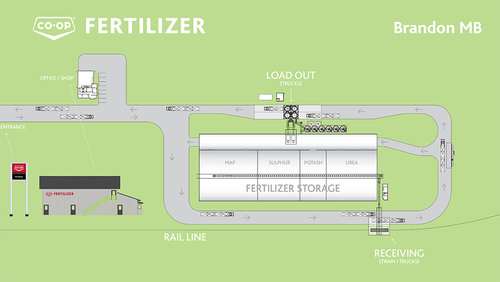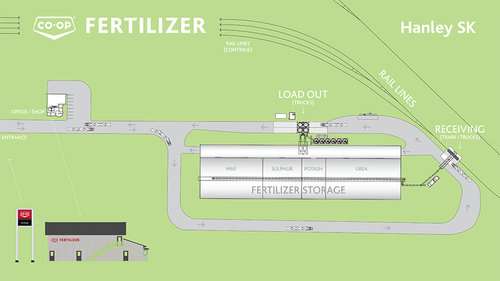One to be built in Hanley, Saskatchewan; the other in Brandon, Manitoba
By Diego Flammini
Assistant Editor, North American Content
Farms.com
Federated Co-operatives Limited (FCL) announced an investment of $75 million to build two new fertilizer terminals in Saskatchewan and Manitoba.
The terminals will be constructed in Hanley, Saskatchewan, which will be able to store up to 45,000 metric tonnes, and Brandon, Manitoba, which will be able to hold up to 27,500 metric tonnes.
The facilities will receive crop nutrition products via rail before storing and blending them. The fertilizers will then be distributed to Co-op Agro Centres and farms across Western Canada.
The terminals will have the capacity to load a super B trailer of blended fertilizer in 10 minutes and dispense up to 400 metric tonnes of straight fertilizer per hour.
The new facilities highlight Saskatchewan’s role as a key agricultural contributor in Canada and abroad. 

“Our province is a key supplier of agricultural products for Canada and the world and there’s a need for continued innovation and investment to help our producers meet this growing demand,” Saskatchewan Agriculture Minister Lyle Steward said in a release.
FCL representatives said the new facilities will help farmers purchase many of their materials in one place.
“Producers want to purchase fertilizer, feed, crop supplies, fuel and equipment at one location. Co-op Agro Centres proudly provide all of those along with the benefits of membership,” said Brad Bauml, executive vice-president of ag and consumer products with FCL in a release. "As owners, retail co-ops and their members will share in the success of these new terminals."
The terminals are scheduled to open in early 2017.